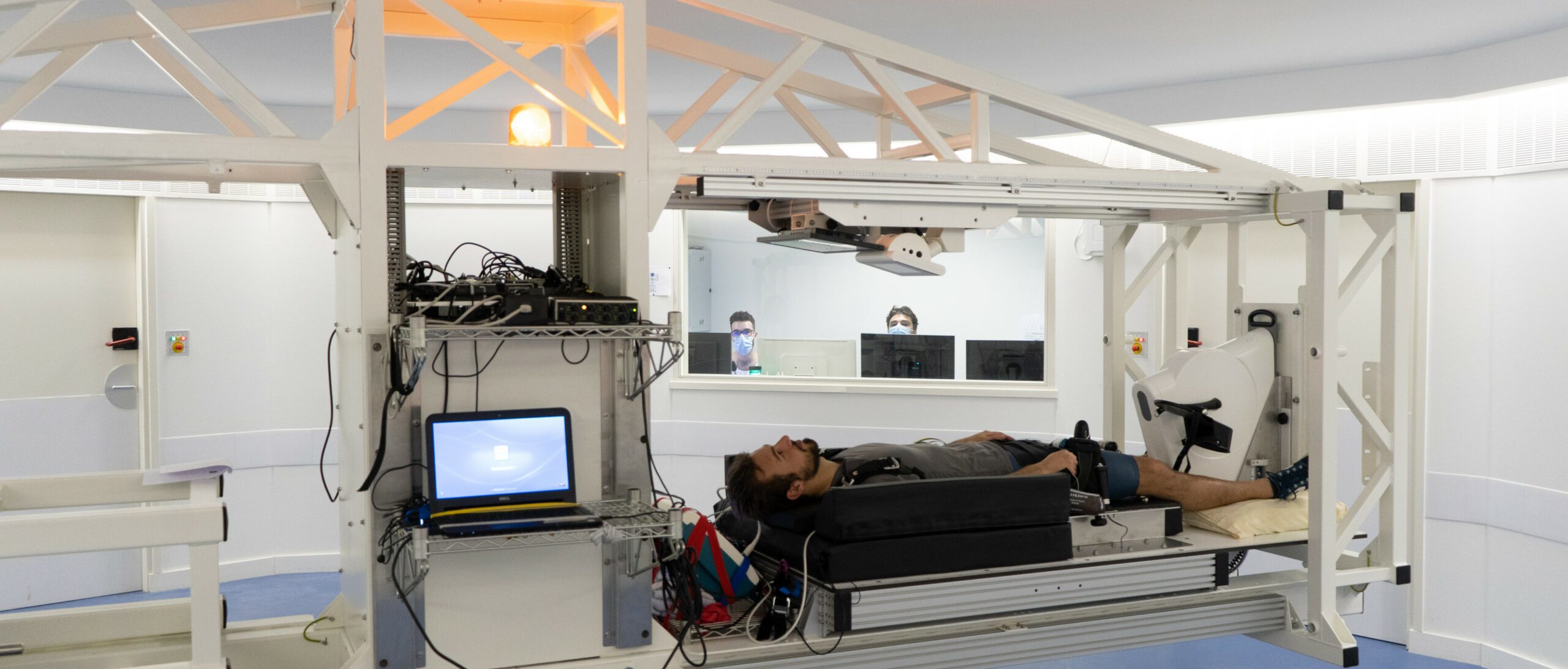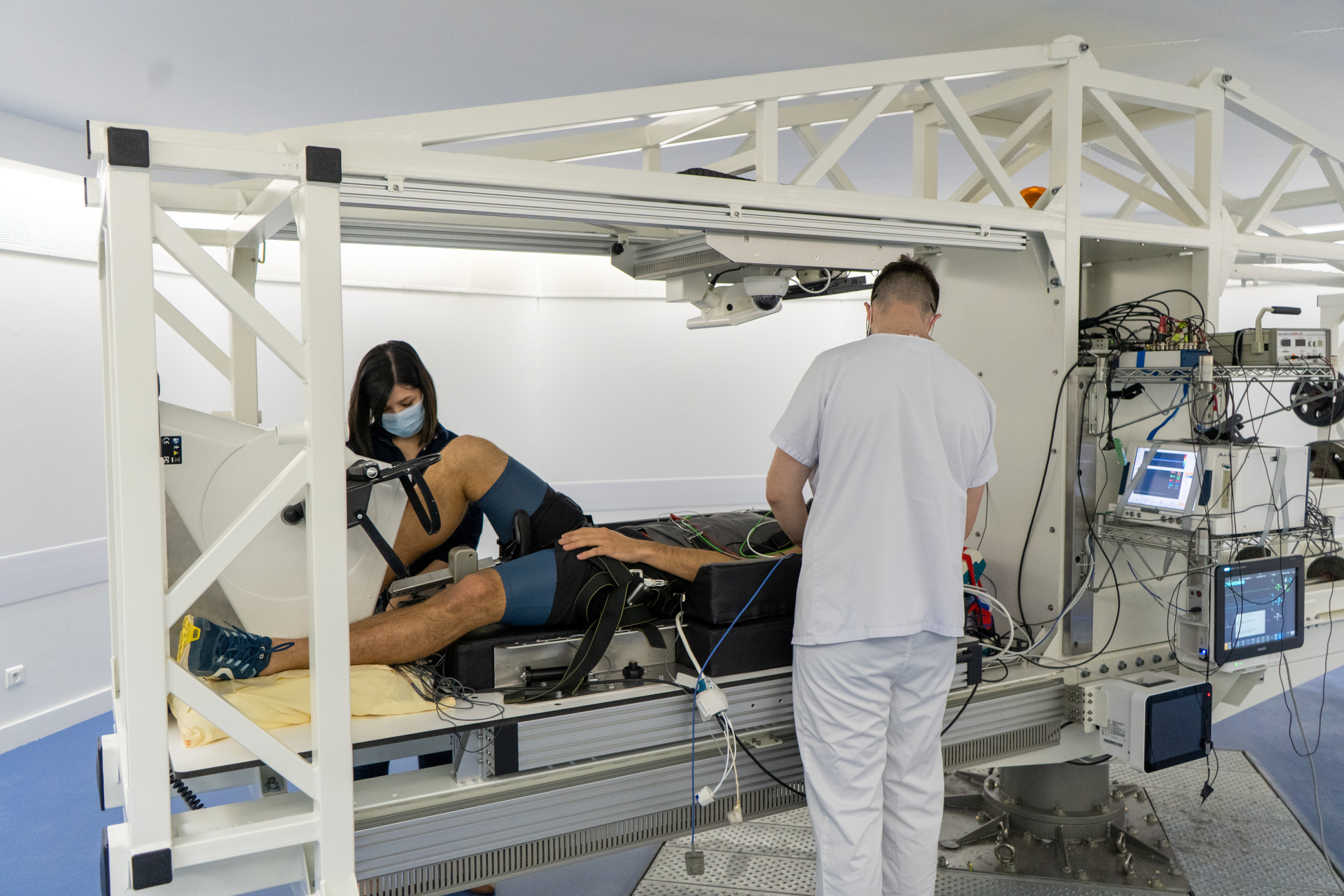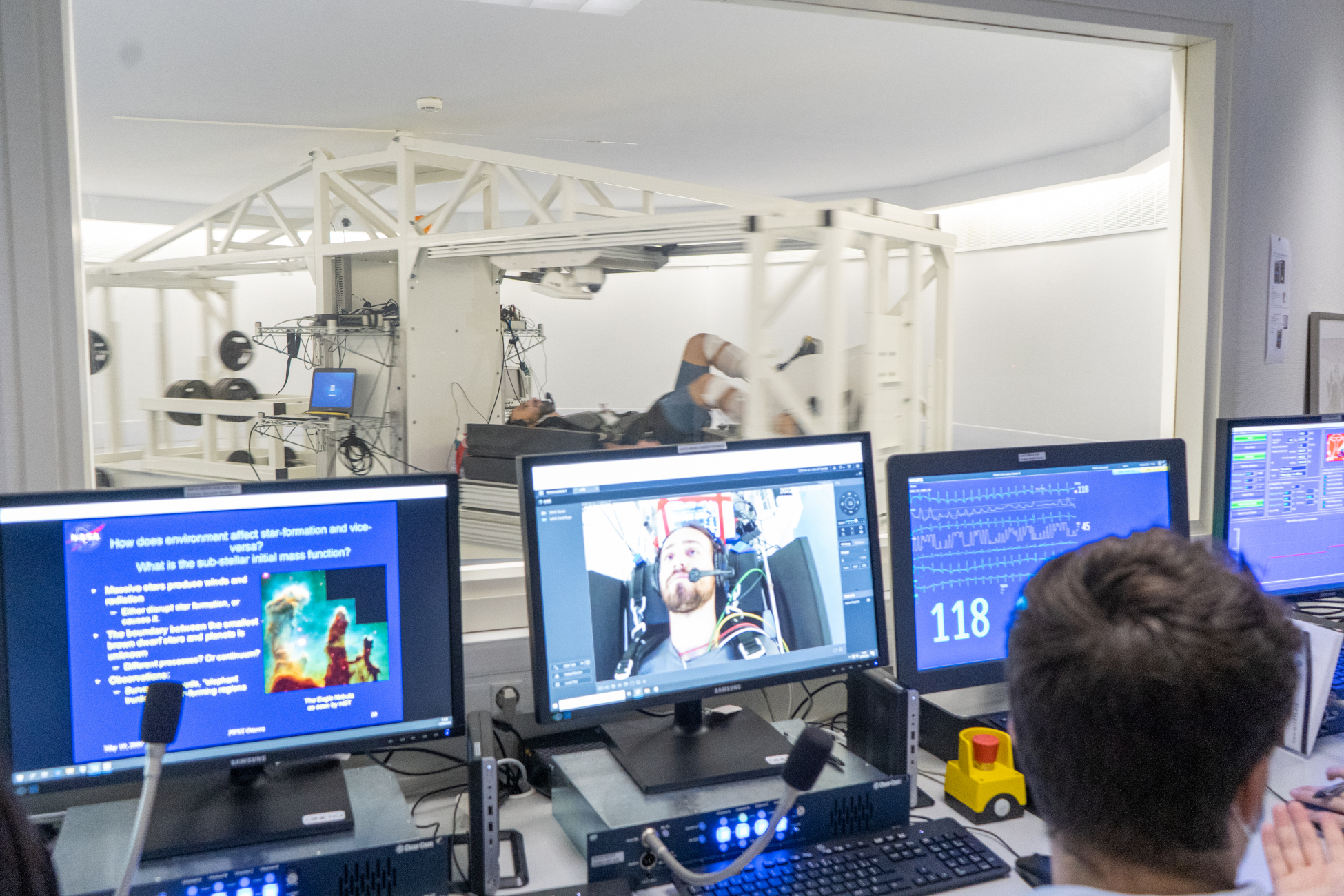Centrifuge and control room

Practical information
In 2007, MEDES acquired a short-arm centrifuge. This was modified in 2022 to allow for new experimentation needs. The centrifuge is housed at the MEDES Space Clinic and is used as a countermeasure (i.e. as a preventive measure) in a number of studies.
Built under an ESA contract and with ESA’s support, it was designed and installed by the Verhaert company.
This equipment is used to evaluate the use of artificial gravity as a countermeasure for weightlessness-induced disorders.
The centrifuge is equipped with medical devices to medically monitor subjects during centrifugation sessions. Vital parameters (electrocardiogram (ECG), blood pressure, heart rate, respiratory rate, oxygen saturation, etc.) are recorded and displayed on a screen in the control room, for real-time monitoring by the doctor.


Why use a centrifuge ?
During spaceflight, the human organism adapts to the new environment and in particular to microgravity (or weightlessness) but deconditions itself to Earth’s gravity. This exposure to microgravity primarily causes changes in the cardiovascular system (due in particular to a migration of body fluids to the upper part of the body), changes in the sensory-motor system, atrophy of the muscles involved in posture and locomotion, and a decrease in bone density during long flights.
These physiological changes mean that astronauts need to readjust on returning to Earth. Similar problems could be faced by astronauts arriving on Mars, where gravity is about one third of Earth’s.
To combat the effects of microgravity and to prepare for the return of astronauts to Earth, studies have been conducted for several years on preventive means called ‘countermeasures’.
Since the beginning of spaceflight, various countermeasures have been tested on the ground and then in flight. To date, however, none of them have proven entirely satisfactory. They are only partially effective, probably because they only affect one physiological system at a time. Space agencies are continuing to conduct simulation studies to assess new countermeasures. For the moment, however, they have found no ideal countermeasure which is effective in the shortest possible time.
Artificial gravity offers a more global approach to the problem of countermeasures. It simply simulates our terrestrial gravitational environment, thereby affecting all our physiological systems.
On behalf of the space agencies, MEDES is thus testing different artificial gravity protocols.
Centrifugation reproduces a hydrostatic pressure gradient with blood flowing into the lower limbs as observed on Earth in the standing position. Artificial gravity can also be expected to have a preventive effect on muscle and bone changes through increased mechanical loads. It may also be useful to combine centrifugation with other measures, such as muscular exercise to increase the preventive effects. A number of studies have been undertaken in this area, including one combining centrifugation and physical exercise in 2022.
